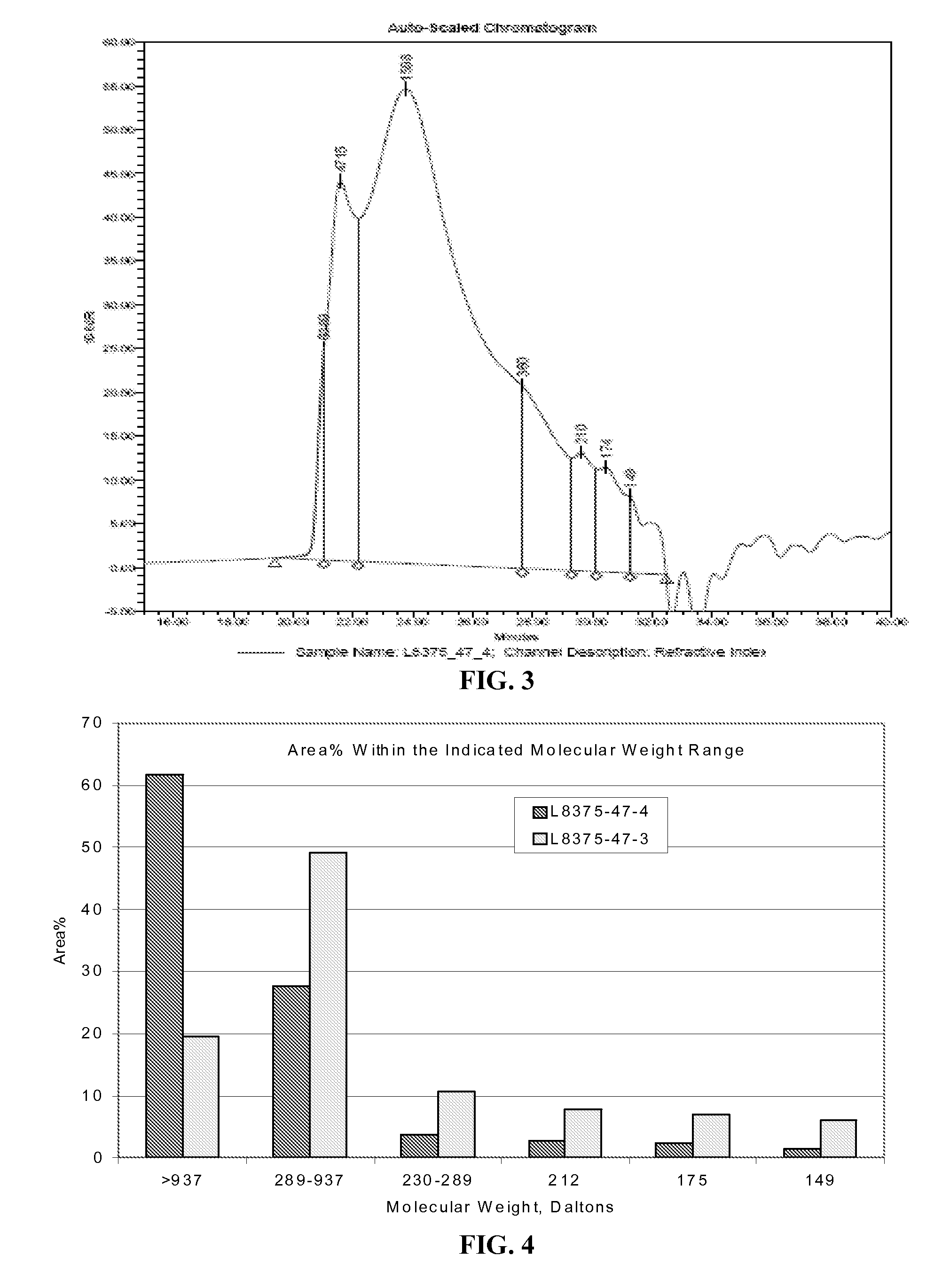Metal impurity and high molecular weight components removal of biomass derived biocrude
a technology of biocrude and metal impurities, which is applied in the direction of solvent extraction, hydrocarbon oil treatment products, separation processes, etc., can solve the problems of catalyst bed plugging and fouling, catalyst deactivation and plugging of the catalyst bed, and affecting the effect of catalyst bed cleaning
- Summary
- Abstract
- Description
- Claims
- Application Information
AI Technical Summary
Benefits of technology
Problems solved by technology
Method used
Image
Examples
example 1
Materials and Methods:
[0041]Various solvent combinations were tested with corn fiber pyrolysis oil and BTG wood-based pyrolysis oil. As the pyrolysis oils were already known to be essentially completely insoluble in toluene or hydrocarbons, combinations of methanol and hydrocarbons were tested. Solutions of each pyrolysis oil at 71 wt % and 50 wt % in methanol (first solvent) were prepared. To these mixtures the second solvent was added dropwise, mixed vigorously and observed for evidence of solids or tar-like precipitation.
Results:
[0042]
TABLE 1Pyrolysis Oil / firstSecond Solventsolvent MixtureTolueneDieselMTBEHeptane71 wt % Corn fiberMiscible up toAt 25 wt %25 wt % MTBE isAt 25 wt %py oil / 29 wt %60 wt % toluenediesel, clearlymiscible;added heptaneMeOHafter which twoevident diesel40 wt % MTBEa second layerlayers appearedlayer, lowshowed darkvisible, nosolubility of pyprecipitatesolubility of pyoil in dieseloil indicated71 wt % BTG25 wt % tolueneInsolubleBegin seeingInsolublepy oil / 29 ...
PUM
| Property | Measurement | Unit |
|---|---|---|
| molecular weight | aaaaa | aaaaa |
| molecular weight | aaaaa | aaaaa |
| molecular weight | aaaaa | aaaaa |
Abstract
Description
Claims
Application Information
 Login to View More
Login to View More - R&D
- Intellectual Property
- Life Sciences
- Materials
- Tech Scout
- Unparalleled Data Quality
- Higher Quality Content
- 60% Fewer Hallucinations
Browse by: Latest US Patents, China's latest patents, Technical Efficacy Thesaurus, Application Domain, Technology Topic, Popular Technical Reports.
© 2025 PatSnap. All rights reserved.Legal|Privacy policy|Modern Slavery Act Transparency Statement|Sitemap|About US| Contact US: help@patsnap.com


